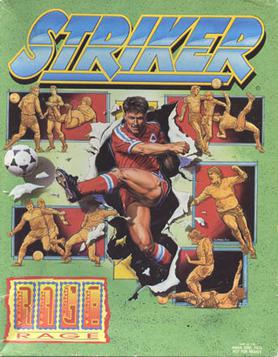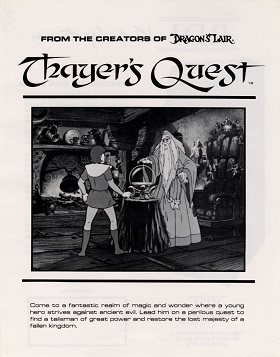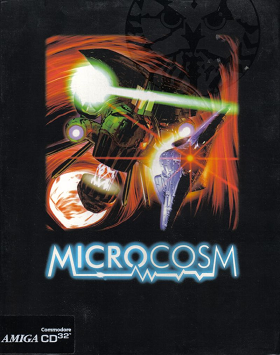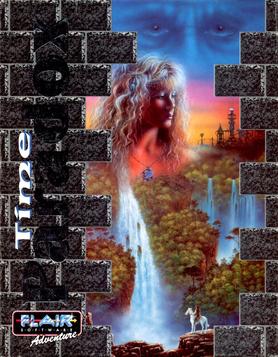
Christopher Hülsbeck, known internationally as Chris Huelsbeck, is a German video game music composer. He gained popularity for his work on game soundtracks for The Great Giana Sisters and the Turrican series.

Lucky Luke is a Western bande dessinée series created by Belgian cartoonist Morris in 1946. Morris wrote and drew the series single-handedly until 1955, after which he started collaborating with French writer René Goscinny. Their partnership lasted until Goscinny's death in 1977. Afterwards, Morris used several other writers until his own death in 2001. Since Morris's death, French artist Achdé has drawn the series, scripted by several successive writers.

X-COM: UFO Defense is a 1994 science fiction strategy video game developed by Mythos Games. It was published by MicroProse for DOS and Amiga computers, the Amiga CD32 console, and the PlayStation.

Gobliiins is a puzzle adventure video game series, consisting of four entries, released by Coktel Vision for the Amiga, Atari ST, DOS, and Macintosh platforms. The first three titles were released in the early 1990s, the fourth in 2009. The visual look of the series and its characters was created by French artist Pierre Gilhodes, whose style was used in another game from Coktel Vision: Woodruff and the Schnibble of Azimuth.

Striker is a soccer video game series first released by Rage Software in 1992.

King's Quest VI: Heir Today, Gone Tomorrow is a point-and-click adventure game, first released in 1992 as the sixth installment in the King's Quest series produced by Sierra On-Line. Written by Roberta Williams and Jane Jensen, King's Quest VI is widely recognized as the high point in the series for its landmark 3D graphic introduction movie and professional voice acting. King's Quest VI was programmed in Sierra's Creative Interpreter and was the last King's Quest game to be released on floppy disk. A CD-ROM version of the game was released in 1993, including more character voices, a slightly different opening movie and more detailed artwork and animation.

EcoQuest: The Search for Cetus is an educational adventure game developed by Sierra On-Line. The original concept was developed by Sierra VP of Creative Development, Bill Davis. The game designers are Jane Jensen and Gano Haine. The game was going to be ported to Amiga and Macintosh, but those releases never came out. A sequel, Lost Secret of the Rainforest, was released in 1993.

The Faery Tale Adventure is a 1987 action role-playing video game designed by David Joiner and published by MicroIllusions for the Amiga, and later ported to the Commodore 64, MS-DOS, and Sega Genesis. The MS-DOS version is titled The Faery Tale Adventure: Book I. Microillusions also released a "Book 1" version for the Amiga which was going to be the start of a series of games, according to Talin, but bankruptcy prevented it. The initial version was produced for the Amiga 1000 and featured the largest game world to that date. A sequel, Faery Tale Adventure II: Halls of the Dead, was released in 1997.

Thayer's Quest is a LaserDisc video game initially developed by RDI Video Systems in 1984 for their unreleased Halcyon console, and later released in arcades as a conversion kit for Dragon's Lair and Space Ace. In 1995 it was ported to home consoles and PC under the title Kingdom: The Far Reaches. The arcade machine had a membrane keypad for controls instead of a joystick. To help players learn the daunting—for an arcade game—controls, a small holder containing instructional leaflets was attached to the cabinet. A sequel, Kingdom II: Shadoan, was released in 1996.

Space Quest IV: Roger Wilco and the Time Rippers is a 1991 graphic adventure game by Sierra On-Line. It was released on floppy disks on March 4, 1991, and released on CD-ROM in December 1992 with full speech support and featuring Laugh-In announcer Gary Owens as the voice of the narrator. It featured 256-color hand painted graphics and a fully mouse-driven interface. It was one of the first video games to use motion capture animation. It cost over US$1,000,000 to produce and sold more than its three predecessors combined. An Atari ST version was announced via Sierra Online's magazine, Sierra News Magazine, but was later canceled.

Rainbow Arts Software GmbH was a German video game publisher based in Gütersloh. The company was founded in 1984 by Marc Ullrich and Thomas Meiertoberens and acquired by Rushware in 1986. The company's decline began in the early 1990s: The distributor did not manage to cover the costs of selling the titles worldwide, while development costs were constantly rising. The Rainbow Arts name lost its notoriety since then. The parent companies Rushware and Softgold were in turn bought up by the American games manufacturer THQ in 1999. In 1999, Funsoft Holding, which acquired Rushware and sister company Softgold in 1992, sold Rushware to THQ, which was incorporated into THQ Deutschland, THQ's German operations arm. Rainbow Arts also led one of the first lawsuits in 1993 on the question whether competition exists between a software company and a bulletin board system of similar name operated by a student, so that claims under trademark law are enforceable. This was confirmed by the Munich District Court.

Microcosm is a 3D rail shooter video game developed and published by Psygnosis in 1993. It was originally developed for the FM Towns, and also ported for the Sega Mega-CD, Amiga CD32, 3DO, and MS-DOS. Microcosm featured realistic FMV animation, with the graphics being rendered on Silicon Graphics workstations. The game is either in first-person or third-person view depending on the gaming system.
There have been seven video games based on The Addams Family television series and films, released between 1989 and 2022 on various home video game consoles.

Seek and Destroy is a 1993 Amiga action video game developed by Vision Software and published by Mindscape, and released in 1994 for the Amiga CD32. A different version was also developed for MS-DOS by the same developer and released in 1996 by publisher Safari Software. The game bears resemblance to Desert Strike: Return to the Gulf.
Tiertex Design Studios Limited was a British software development company and former video game developer based in Macclesfield, England; it was founded in 1986, focusing on porting games to home computers and handheld platforms.

Radarsoft is a Dutch software development company that published video games in the 1980s. It released its first game in 1984 for the Commodore 64. Until 1987 Radarsoft released multiple titles for the Amiga, Atari, Philips MSX and DOS. Their main focus was the Dutch market, so most games are only available in Dutch. In 1986 Radarsoft went to the American video game market, but a packaging error at a Dutch warehouse cost the studio more money than they were able to recoup.

Time Paradox is a point-and-click adventure game developed and released by Flair Software for the MS-DOS in 1996 only in Europe.

Links: The Challenge of Golf is a golf video game developed by Access Software. It was published for MS-DOS in 1990, followed by the Amiga in 1992. A Sega CD version, developed by Papyrus Design Group, was released in 1994. It is the first game in the Links series, and was followed by Links 386 Pro (1992). A Microsoft Windows version, titled Microsoft Golf, was released in 1992 as the first game in the Microsoft Golf series.

The Apprentice is a 1994 vertically scrolling platform game developed by The Vision Factory and published by Philips Interactive Media in North America and Europe exclusively for the Philips CD-i. The first title to be created by The Vision Factory for the CD-i platform, the game is set on a fantasy setting inside the castle of wizard Gandorf S. Wandburner III, as players assume the role of young apprentice magician Marvin in order to complete a series of tasks given by his master while facing multiple mischiefs and creatures along the way.

















